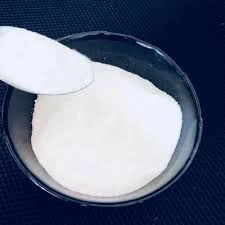
Nov . 13, 2024 11:18 Back to list
cellulose ether
The Role of Cellulose Ethers in Modern Industries
Cellulose ethers, derived from the natural polymer cellulose, have become vital materials across various industries due to their unique properties and versatile applications. These compounds are formed by the chemical modification of cellulose through etherification, resulting in a range of derivatives that exhibit different solubility characteristics, viscosities, and functionalities. This article delves into the significance of cellulose ethers, their production process, and their varied applications.
Production of Cellulose Ethers
The production of cellulose ethers involves the reaction of cellulose, obtained primarily from wood pulp or cotton linters, with an alkali, typically sodium hydroxide, and an etherifying agent such as methyl chloride or ethylene oxide. This process alters the hydroxyl groups on the cellulose chains, transforming them into ether groups, which significantly change the physical and chemical properties of the resultant material.
The most common types of cellulose ethers include methyl cellulose (MC), ethyl cellulose (EC), hydroxypropyl cellulose (HPC), and hydroxyethyl cellulose (HEC). Each of these varieties offers distinct characteristics tailored to specific applications. For instance, methyl cellulose is known for its excellent film-forming abilities and water retention, making it a popular choice in building materials and food applications.
Applications in Various Industries
Cellulose ethers find diverse applications in multiple sectors. In the pharmaceutical industry, they are used as excipients in the formulation of controlled-release medications. Their ability to form gels and enhance viscosity helps in regulating the release rate of active ingredients, thereby improving the efficacy of the drugs.
cellulose ether

In the food industry, cellulose ethers serve as stabilizers, thickeners, and emulsifiers. They are commonly used in products such as ice creams, salad dressings, and sauces to improve texture and mouthfeel while providing stability and preventing separation. Given their non-toxic nature and compatibility with various food ingredients, cellulose ethers have gained acceptance as safe additives.
The construction industry also benefits significantly from cellulose ethers. They are incorporated into cement-based materials, such as mortars and plaster, to enhance workability, adhesion, and water retention. The use of cellulose ethers helps to control the curing process, allowing for improved performance and durability of construction materials.
Moreover, cellulose ethers are increasingly important in the cosmetics and personal care sector. They are utilized in lotions, creams, and gels as thickening agents, providing the desired texture and stability. Their film-forming properties also aid in the development of long-lasting and water-resistant formulations, enhancing the overall user experience.
Environmental Impact and Sustainability
The growing demand for cellulose ethers has also raised questions regarding sustainability. As they are derived from natural sources, cellulose ethers align with the global shift towards biodegradable and environmentally friendly materials. The use of renewable resources in their production process helps reduce the ecological footprint associated with synthetic polymers.
In conclusion, cellulose ethers play a crucial role in modern industries due to their versatile properties and wide-ranging applications. From pharmaceuticals to food, construction, and cosmetics, these compounds are integral to developing innovative products that meet consumer demands. Their sustainability profile further strengthens their position in the marketplace, paving the way for a greener future. As research progresses, we can expect to see even more exciting developments in the use of cellulose ethers, solidifying their importance in both existing and emerging applications.
-
Versatile Hpmc Uses in Different Industries
NewsJun.19,2025
-
Redispersible Powder's Role in Enhancing Durability of Construction Products
NewsJun.19,2025
-
Hydroxyethyl Cellulose Applications Driving Green Industrial Processes
NewsJun.19,2025
-
Exploring Different Redispersible Polymer Powder
NewsJun.19,2025
-
Choosing the Right Mortar Bonding Agent
NewsJun.19,2025
-
Applications and Significance of China Hpmc in Modern Industries
NewsJun.19,2025







